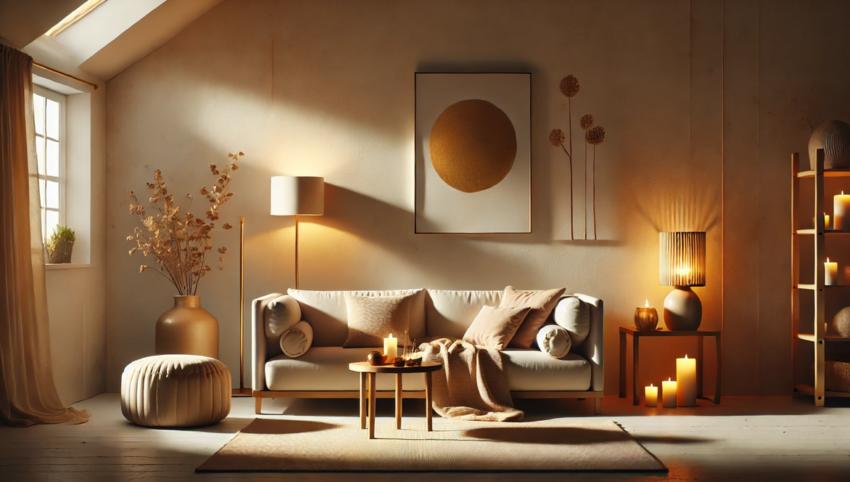Lighting isn’t just about visibility—it’s a full-blown psychological experience. Your brain reacts differently to different types of light, and the wrong kind can turn a cozy evening into a stress-inducing disaster. If you’ve ever wondered why overhead lights feel like a personal attack, science has the answers.
Your Brain Is Still Stuck in the Stone Age
The human brain is not as modern as we like to think. Sure, it can handle WiFi passwords and online banking, but when it comes to light, it’s still operating on an ancient survival script. Our ancestors relied on the sun’s natural rhythms—bright light in the morning, warm firelight at night—to regulate their internal clocks.Enter artificial lighting. Suddenly, humans had control over brightness at all hours, and while this is great for productivity, it’s not so great for relaxation. Your brain still associates bright, white light with midday alertness, which is why your ceiling fixture makes you feel like you should be doing taxes instead of unwinding.
Why Overhead Lights Feel Like an Interrogation Room
Harsh overhead lighting creates shadows that are anything but flattering, making everything (and everyone) look slightly more ominous. This is because high-intensity, direct light removes depth and contrast, leaving your space feeling flat and sterile. It’s functional, sure—but so are hospital waiting rooms.Psychologists have found that people feel more comfortable and at ease in environments with layered lighting—a mix of lamps, wall sconces, and dimmable options that create a soft, ambient glow. Overhead lighting, especially the fluorescent kind, tends to trigger higher cortisol levels, which is *not* the hormone you want flowing when you’re trying to relax.
Warm Light, Cool Light, and Why It Matters
Light color temperature is measured in Kelvin (K), which sounds scientific because it is. But all you really need to know is:- Warm light (2000K-3000K): Cozy, relaxing, mimics candlelight or a good old-fashioned sunset.
- Cool light (4000K-6500K): Crisp, energizing, feels like standing in an office or a science fiction movie.
To make your home feel truly cozy, stick to warm white or soft yellow lighting in living spaces. Save the bright white stuff for kitchens, offices, and anywhere you need to *see* what you’re doing without squinting.
How to Trick Your Brain Into Relaxing With Lighting
Your brain is highly suggestible. Give it the right cues, and it will settle into a cozy, relaxed state without protest. Here’s how to light your home in a way that signals “comfort” rather than “corporate meeting room”:- Use table lamps, floor lamps, and wall sconces instead of relying on one central ceiling light.
- Install dimmer switches so you can adjust brightness depending on the mood.
- Opt for LED bulbs with warm color temperatures (2700K-3000K is the sweet spot for coziness).
- Layer your lighting—combine different sources to create depth and ambiance.
- Strategically place string lights or LED strips to create soft glows in unexpected places.
The Magic of Indirect Lighting
One of the simplest ways to make your home feel more inviting is to bounce light off surfaces instead of blasting it straight into the room. Indirect lighting softens shadows, reduces glare, and creates a warm, even glow that feels effortlessly cozy.Ways to use indirect lighting include:
- Placing floor lamps behind furniture so light reflects gently off the walls.
- Using LED strip lights under shelves, behind TVs, or along baseboards for a subtle, ambient effect.
- Positioning table lamps near walls so the glow spreads outward instead of glaring in one spot.
Candles and Firelight: Cozy Champions of the Lighting World
If you’re looking for the ultimate cozy lighting, fire is undefeated. Humans have gathered around flames for warmth and security since prehistoric times, and even in the age of smart bulbs and automation, nothing quite replicates the comfort of flickering candlelight or a fireplace.Even if you don’t have a real fireplace, there are alternatives:
- LED candles that mimic the flicker of real flames without the fire hazard.
- Himalayan salt lamps, which give off a warm, ember-like glow.
- Fireplace projectors—yes, these exist, and yes, they’re surprisingly effective at creating a cozy ambiance.
When Smart Lighting Isn’t So Smart
Smart lighting promises convenience, but let’s be honest—it also introduces a level of frustration that traditional lamps never did.Ever tried dimming a smart bulb with an app, only to have the WiFi connection drop mid-adjustment? Or walked into a room only to realize your voice-controlled light system isn’t responding because it’s updating? These things happen.
Smart bulbs can be fantastic for setting the mood, but they work best when paired with simple, manual options. A good rule of thumb: if you need to read a tutorial to turn your lights on, you’ve gone too far.
The Cozy Glow Wrap-Up
Your home’s lighting isn’t just about function—it’s about how you *feel* in a space. Warm, indirect, layered lighting makes a home feel inviting, while harsh overhead lights make it feel like an operating room.If you want maximum coziness:
- Switch to warm, soft lighting wherever possible.
- Ditch the overhead glare in favor of lamps, sconces, and indirect light sources.
- Use candles or flickering lights to tap into that primal comfort.
- Embrace dimmers and smart lighting, but keep manual backups in case technology decides to rebel.
Article kindly provided by keslighting.co.uk


